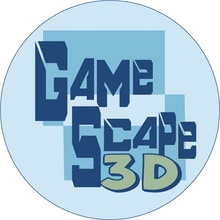Inov3D got the chance to ask Pathio Questions, about there new slicer here is the questions and answers.
Pathio Questions 1 – What makes Pathio stand out from the rest?
At the moment, our model grouping system, intuitive UI, advanced scripting capabilities, and 3D offsetting are our stand-out features. Very soon we’ll have in-app integration of Octoprint and Duet Web, which will help streamline the printing process, too. Going forward, we’re looking to continue to improve in two main areas:
1. The algorithms behind G-code generation. This means we’ll have better supports, smarter slicing settings, and tools to improve part strength
2. The printing workflow. This includes things like making it easier to export from CAD packages, giving you tools to iterate through multiple prints of the same object, and simplifying the process of printing at production scale.
Pathio Question 2 – Will there be any limit to cloud storage?
We’re not planning on having any limits for the number of printer and filament profiles you can store online. We are currently still considering possibilities for storing entire slicing projects online because that would require you to upload your models, which would take a lot more storage space and could lead to moderation concerns, too.
Pathio Question 3 – You mention that you will eventually charge for pathio, do you have any starting price point in mind?
Nothing is set in stone at the moment. We’re hoping to keep Pathio affordable for anyone: hobbyists, professionals, students, and anyone else, too! At the moment we’re considering a subscription service with a free trial, but don’t have plans for the actual cost yet.
Pathio Question 4 – What cloud infrastructure will you use for people’s profiles?
We’re planning on using our Django server, at least for printer and filament profiles.
Pathio Question 5 – Are there options to bypass the cloud and use local storage?
Absolutely. Your hardware settings (printer and filament profiles) are stored locally in a .json file which you can get to easily and change however you’d like. Cloud sync for hardware profiles is meant to be a quality of life improvement, not a headache! We’re also working on ways to let you publish and share your hardware settings with the Pathio community. Again, you’ll have full control over that process.
Pathio Question 6 – Is there a planned/anticipated full product release date.
Not yet. We’re still several months out from a version 1.0 release. Right now we’re focusing on getting the most useful slicing features into Pathio while also cleaning up some bugs that have shown up from the move to Open Beta.
Pathio Question 7 – Will it incorporate features such as flow rate/ extrusion multiplier, extrusion width, Zhop
I’m happy to say that all of these slicing settings are already available Pathio!
How will the supports algorithm be handled, such as more user setup or more automated?
Right now Pathio automatically generates supports based on overhang angles on your model (just like other slicers) but we’re about to start work on letting you adjust manually where supports go. We’ve got a few ideas for improvements to the process of telling Pathio exactly where you want supports.
Can you set a 45,-45 support for tall supports? Similar to the comparison of Cura vs S3D
Yes! That’s already available now.
Will there be a terminal function to send custom commands to your printer?
We have thought a bit about adding USB connection to printers. We’re not planning on adding communication over USB in right away since there are some downsides to printing over USB versus using Octoprint, Duet Web, or an SD card. That’s not to say we’ll never have it in Pathio, though.
Will it support Octopi via the network as Cura does?
We’re currently working on Octoprint and Duet Web integration. Those should be done very soon!
When slicing, is it more CPU or GPU dependent?
Pathio currently relies mostly on your CPU to slice. We’re looking into speeding up slicing with your GPU, but that’s further down the line.
Will you allow add-ons from third-party developers?
Good question! Right now that’s not in our immediate plans as there’s so much to do with the core slicing engine of Pathio. But after launch, it’s something we’d like to allow.
What firmware will they support?
Pathio currently supports all firmwares that handle normal G-code: Reprap Firmware, Marlin, Repetier, and Klipper, among others. We’re also compatible with Ultimaker’s printers (they use different flavours of G-code).
We are not directly compatible with printers that use .x3g files like old Makerbot printers, Flashforge printers, and Sailfish firmware. Owners of those machines can use GPX to post-process the gcode that Pathio outputs, though, and we’re most likely going to automate that process later on. As for other, more exotic firmwares, we’re still investigating what is necessary for us to be compliant with them.
What feature will stand out the most?
The next big thing that’s coming in is Dynamic Tracking, a system of printing with variable track widths to print thin parts of your model. It also handles parts of models that are just a little bit too big that would have been left with a gap before, and instead fills them up properly. It’ll make many 3D models a lot stronger and print better!
Interested in Pathio check this out
The post Pathio Questions And Answers Lets Get Them Layers Down appeared first on Inov3D.


